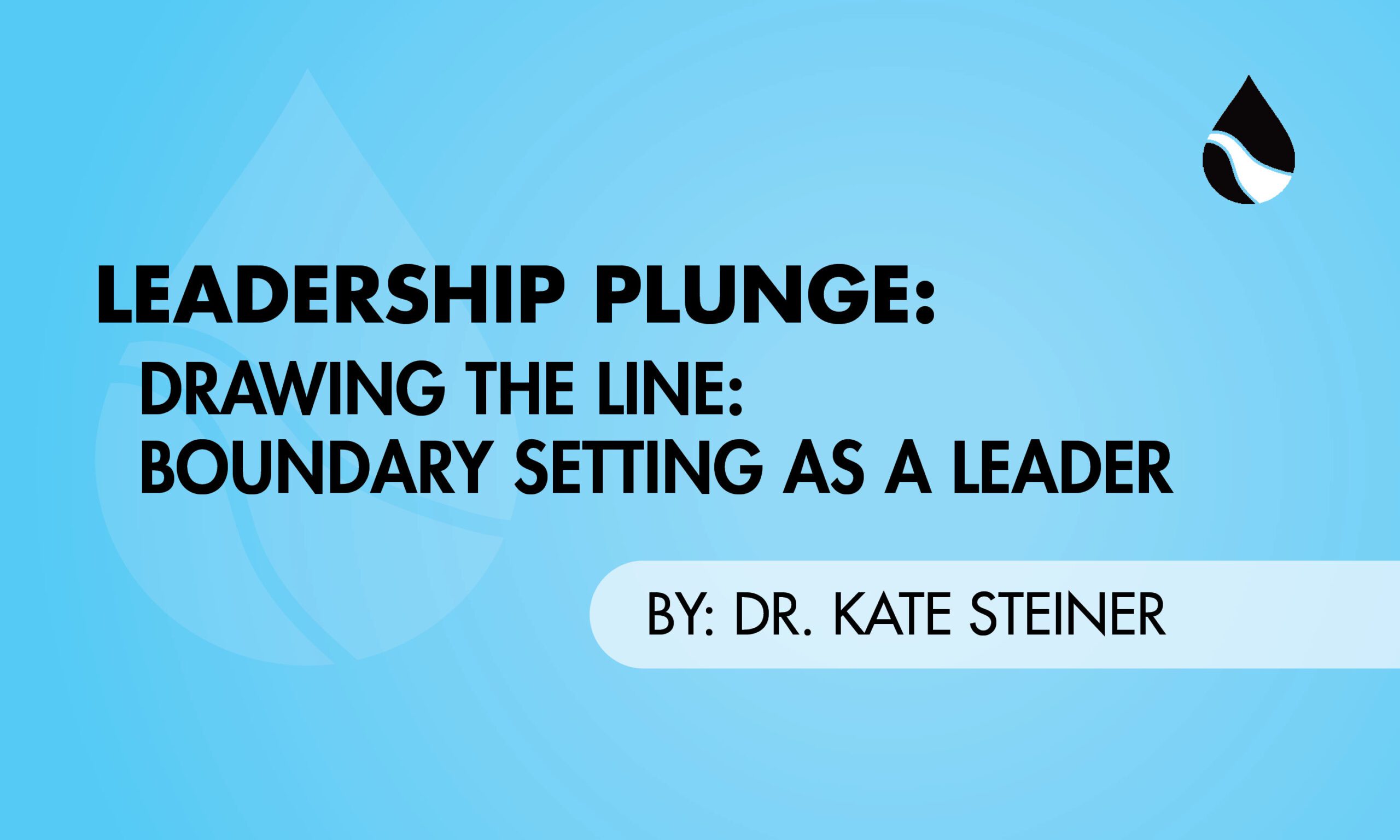
Leadership Plunge – Drawing the Line: Boundary Setting as a Leader
How do you draw your boundaries with other people? Do you lay them out in pencil, with the ability to erase and change where the line is? Or do you draw them in sharpie, permanent unmovable or really messy if you do?
I think that true effective boundary setting lies somewhere between the flexibility of the pencil and the strength of the sharpie. Having clear boundaries that are communicated to other humans around while also listening to how they are impacted by those boundaries works best.
As a leader have you considered what kinds of boundaries you need to set for the success of both you and the leadership role you hold?
Here are five types of boundaries you want to consider when establishing your expectations.
Emotional: When setting emotional boundaries, you want to consider how much you can take in the feelings of others. You also want to think about how you will share your emotions with anyone who may respond poorly.
Time: Your time is a valuable resource, and it is important to think about how you will protect it when it is utilized. Time boundaries are important at home, school, work, and in social settings. You want to be sure that you set aside enough time for each area of your life without over-committing.
Mental: This is your intellectual capacity. When you are tired or fatigued you have a lower capacity to have a discussion. You also want to consider time and space for your mental capacity.
Material: These are possessions you own like your car, clothing, money, furniture, home, etc. Consider what you are willing to share and your expectations for how your things will be treated by others.
Physical: This is your need for personal space, including your level of comfort with touch and your physical needs like eating, sleeping, and drinking water.
Beyond knowing what your boundaries are you also need an effective way to communicate them to other people. You start by knowing your own needs and why those are important. Then you want to create a space for conversation, so everyone around you can learn your expectations without feeling defensive. Finally, you want to create a plan for follow-up if your expectations or boundaries are not met.
Being clear with others about your needs and expectations helps to alleviate miscommunication, making your job as a leader, less stressful.
Learn More about Leadership Plunge at campuspeak.com/workshops/leadershipplunge
